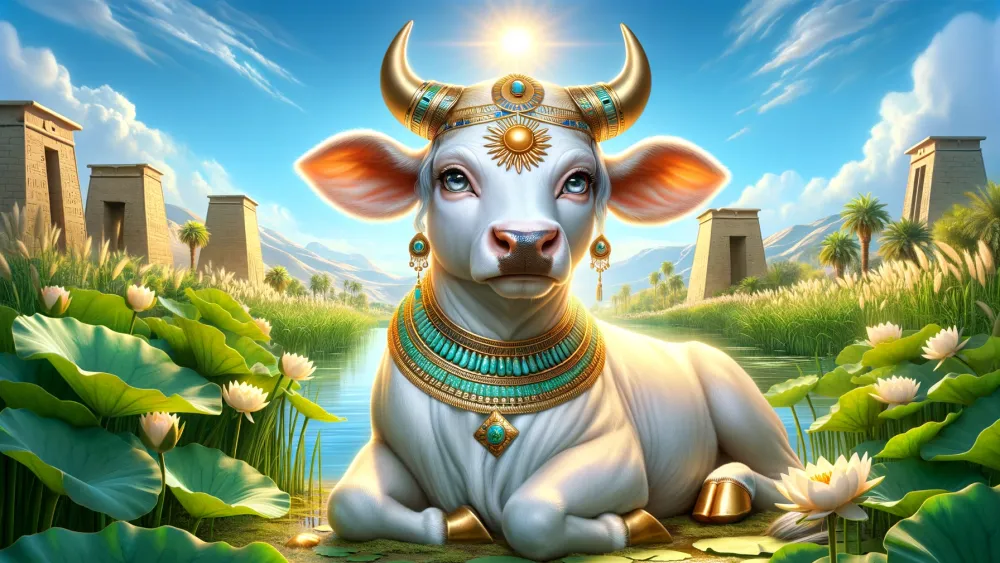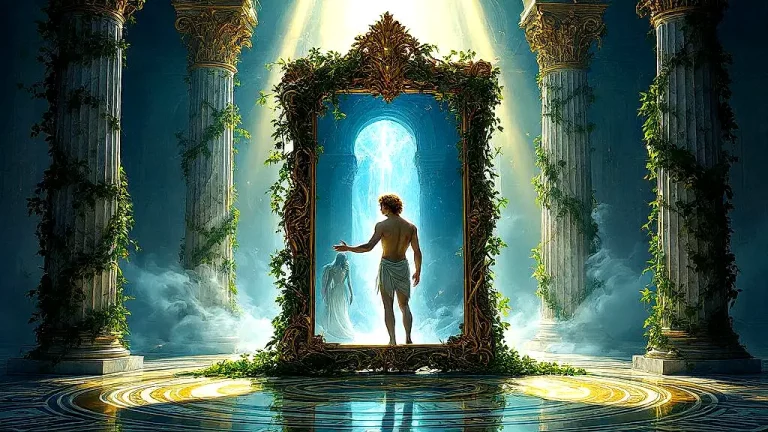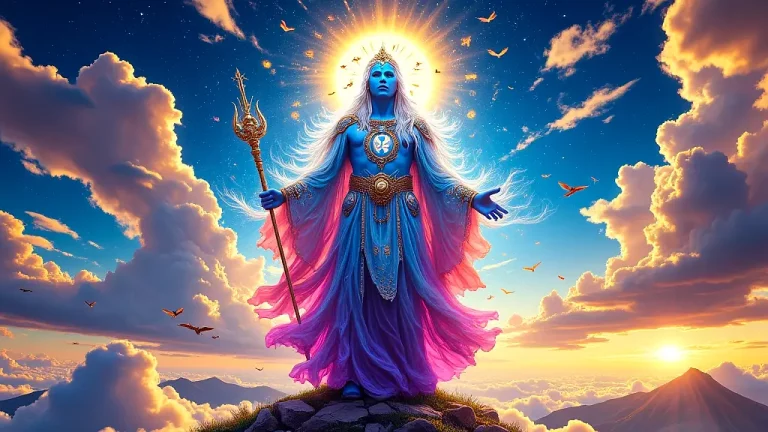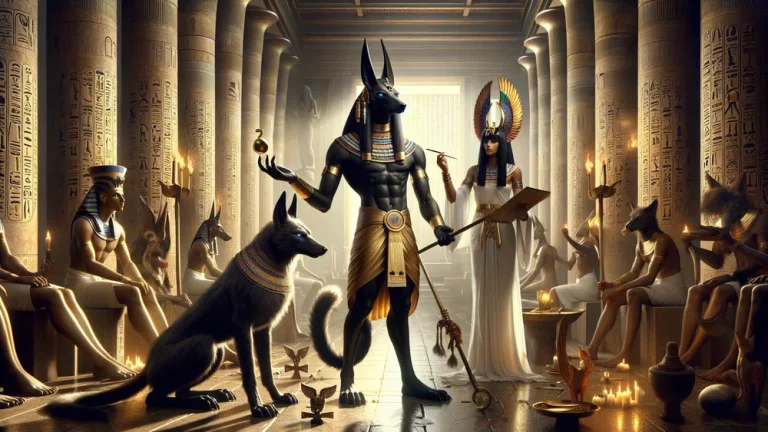Hesat: Egyptian Cow Goddess Of Fertility and Milk
Hesat, the ancient Egyptian cow goddess, is a fascinating figure. She’s all about fertility, nourishment, and motherhood. Imagine living in a time when cows were super important for survival – milk was like gold! Hesat symbolizes that life-giving milk, making her a big deal in religious rituals and everyday life. This blog post dives into who she is, what she stands for, and why she still matters today.
Key Points:
- Hesat is an ancient Egyptian cow goddess symbolizing fertility and nourishment.
- She first appeared in texts during the Old Kingdom period and is closely linked to Hathor.
- Hesat played a vital role in rituals for childbirth and farming in ancient Egyptian religion.
- Cow deities like Hesat and Hathor symbolize life, care, and bridging the gap between gods and humans.
- Hesat is often represented with cow features and symbols of fertility and divine power in art.
- Her legacy lives on in modern culture through books, art, and rituals in Kemeticism.
- Hesat shares similarities with cow goddesses from other cultures like Hindu and Greek mythology.
Interestingly, we will look at old texts and art to understand her story better. Plus, we’ll see how people talk about her now – in books or even movies! Think of it as getting to know an ancient celebrity whose influence never really faded away. So stick around; you might find some surprising connections between Hesat’s world and ours!
The Mythological Background of Hesat
To really get why Hesat is special, we need to dig into her story. Where did she come from? How did she become such a big deal? Let’s find out!
The Origin and History of Hesat
Hesat first pops up in ancient Egyptian texts during the Old Kingdom period (around 2686–2181 BCE). She usually shows up as a cow or a woman with cow features, which makes sense since she’s all about nourishment and fertility. Interestingly, Hesat is closely linked to Hathor, another big-name cow goddess.
Sometimes people even see her as just another side of Hathor. In ancient myths, folks believe Hesat gave birth to the divine bull Apis. Apis was super important in Memphis (a major religious hub back then). Over time, how people worshipped her changed along with society’s values and practices. Her story stuck around through the Middle and New Kingdoms too.
You’d find her name popping up in rituals and temple art. Moreover, cows were a huge deal for Egyptians because they relied on them for farming and food. So it’s no surprise that Hesat stayed relevant for so long!
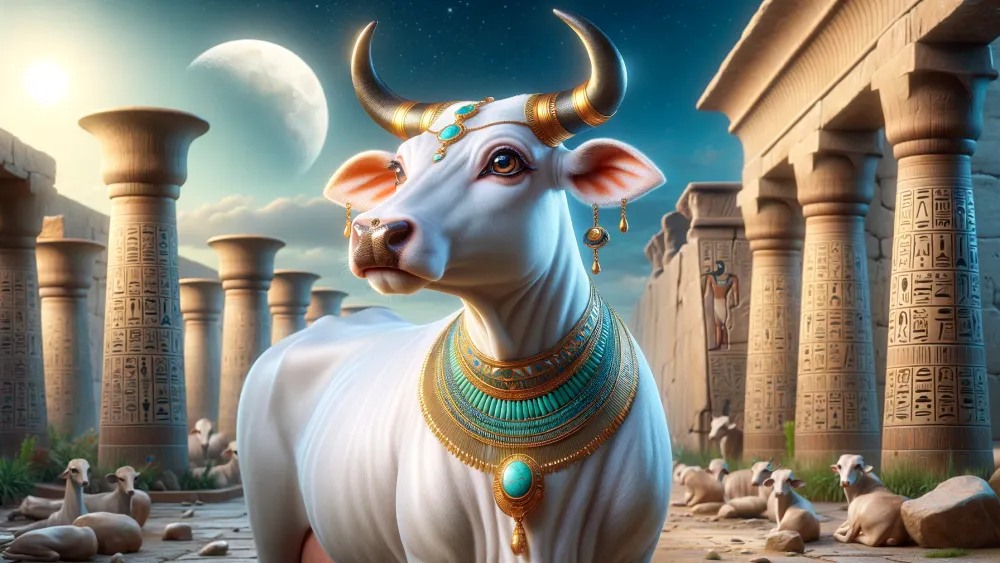
Hesat’s Role in Ancient Egyptian Religion
Hesat plays a big role in ancient Egyptian religion, mainly tied to fertility and nourishment. People often call on her during rituals for childbirth and farming. Why? Because she’s seen as a life-giver. Interestingly, she’s also connected to the divine bull Apis, which is super sacred in Memphis (a key religious spot). Her milk? Folks believe it has special powers – think purity and sustenance.
Moreover, you can find Hesat popping up in religious texts and temple carvings alongside other gods. This shows just how important she is within their pantheon. At the same time, people look to her for protection of mothers and kids in everyday life too. Given that cows are crucial for farming and food back then, it’s no wonder Hesat’s influence stretches from grand ceremonies right down to daily routines!
Hesat’s significance in ancient Egyptian religion is evident through her association with fertility and nourishment, as well as her role as a protector of mothers and children in both religious rituals and daily life.
Symbolism and Significance of Cow Deities
Cow deities in ancient Egyptian mythology are super important, mainly because they stand for nourishment, motherhood, and fertility. Think about it – cows give milk, which is a big deal for any society relying on livestock. This makes them symbols of life and care.
For instance, cow goddesses like Hesat and Hathor are celebrated for making sure the land stays fertile and families thrive. Interestingly, cows also connect to both the sky and earth. They kind of bridge the gap between gods and humans. You often see them in art with sun disks or horns (showing their link to Ra, the sun god). Moreover, these images highlight their protective nature.
Given that agriculture was crucial back then, it’s no surprise that cow deities were so venerated! Their importance reflects how much people depended on farming and animals to survive.
Hesat’s Attributes and Iconography
So, we’ve talked about Hesat’s role and what she symbolizes. Now, let’s check out how she looks in ancient art and what makes her special.
Physical Traits and Depictions
Hesat usually shows up as a cow or a woman with cow features in ancient Egyptian art. You often see her with a sun disk between her horns (showing she’s linked to the sun god Ra). Sometimes, she has a uraeus on her forehead (that’s the rearing cobra), which means royalty and divine power.
Moreover, Hesat might be holding a scepter and an ankh (the symbol of life), pointing out her role in fertility and nourishment. Interestingly, many depictions show her giving milk to other gods or even the pharaoh. This highlights how important she is for sustaining life. These artistic details always emphasize her special traits and her respected status among Egyptian gods.
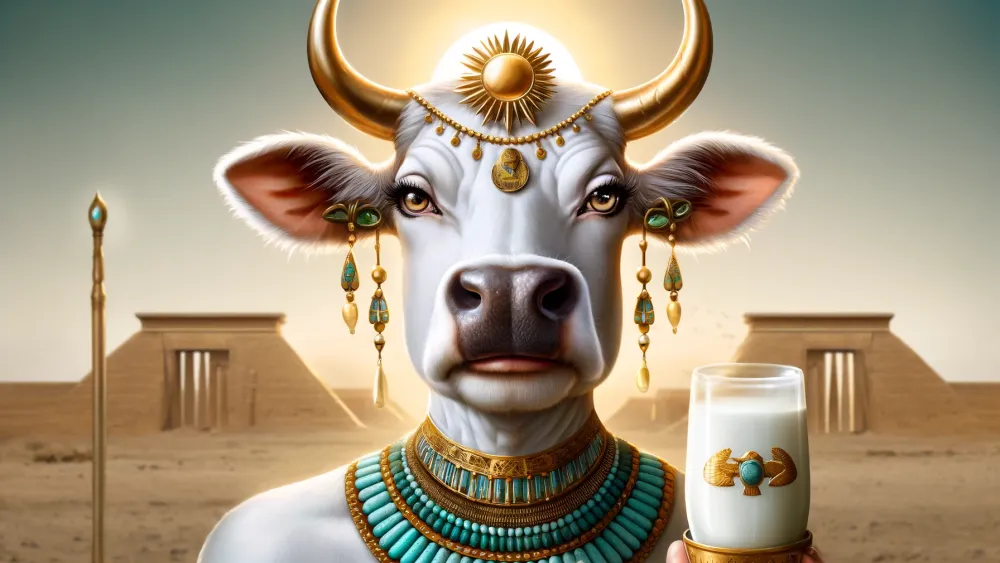
Other Names and Epithets
Hesat goes by several names in ancient Egyptian mythology, each showing a different side of her. One common name is “The Divine Cow,” which highlights how sacred she is. Another one you might come across is “The Nourisher,” pointing out her role in providing food and sustenance. She’s also called “The Mother of Milk,” linking her directly to fertility and nourishment.
Interestingly, some texts refer to her as “The Great One.” This title really underscores just how important she was among the gods. You can find these names in various old writings and carvings (like on temple walls). They show all the different roles Hesat played for the ancient Egyptians.
Hesat’s Influence and Legacy
So, we’ve talked about Hesat’s traits and her many names. Now, let’s see how she has left her mark on culture and what kind of legacy she has.
Hesat’s Influence on Contemporary Culture
Interestingly, you can still see Hesat’s influence in today’s world. For instance, she pops up in modern books and documentaries about ancient Egypt. Moreover, some artists use her image and symbols (like the cow and sun disk) in their work. This shows how much she still matters.
On the flip side, video games and movies with Egyptian themes often feature her story too. It’s a cool way to introduce new people to Hesat. Meanwhile, folks who follow ancient Egyptian religion today (called Kemeticism) still honor her in their rituals. Isn’t it fascinating how her legacy lives on?
Hesat’s legacy persists in various forms today, from art and media to religious practices, which demonstrates her continued relevance and impact on modern society.
Connections to Other Cow Goddesses
Interestingly, Hesat has a lot in common with other cow goddesses from different cultures. For instance, she’s often compared to Hathor in ancient Egypt. Both Hesat and Hathor represent motherhood, fertility, and nourishment. They even share similar looks with their cow-like features.
On the flip side, Hindu mythology has Kamadhenu (also called Surabhi), who stands for abundance and is seen as the mother of all cows. Like Hesat, Kamadhenu symbolizes fertility and sustenance. Meanwhile, Greek mythology links Hera to the cow too. She plays a nurturing role just like our Egyptian goddess here. So you see?
These connections show how many ancient civilizations venerated cow deities for their shared traits of fertility, nourishment, and maternal care.
The Representation of Hesat in Art and Media
Interestingly, you can spot Hesat in various forms of art and media throughout history. In ancient Egypt, she often shows up as a cow or a woman with cow ears and horns (sometimes with a sun disk between the horns). You might see these images on temple walls, statues, or even amulets. On the flip side, modern artists still find inspiration in her symbols.
For instance, contemporary paintings and sculptures use her cow-like features to bring out themes of fertility and nourishment. Moreover, films and documentaries about ancient Egypt sometimes mention Hesat. They help new audiences learn about her story. Video games with Egyptian themes also include her character. It’s pretty cool how players get to interact with her story in a virtual world.
So whenever you come across these representations, remember that they show how Hesat’s presence endures both historically and today!
Hesat’s presence in art and media spans across history and modern times, appearing in various forms and inspiring contemporary artists and creators.
Pantheon of All the Egyptian Mythology Gods
Interestingly, the Egyptian pantheon is huge and full of gods and goddesses with unique stories. For instance, you have Ra, the sun god, shining bright every day. Then there’s Osiris, who rules over the afterlife. On the flip side, there are lesser-known ones like Nephthys (the goddess of mourning) who might not get as much spotlight. Moreover, these deities played a big role in daily life for ancient Egyptians.
They influenced everything from farming to justice. Curious to dive deeper? Check out this list of all the Egyptian gods. It’s packed with info!
FAQs
1. What Are The Main Powers And Abilities Attributed To Hesat?
The main powers and abilities attributed to Hesat include providing nourishment through milk and promoting fertility.
2. How Is Hesat Related To Other Egyptian Deities?
Hesat is related to other Egyptian deities primarily through her connection to Hathor, another cow goddess, and her role as a maternal figure in the pantheon.
3. In What Ways Is Hesat Worshipped Today?
In what ways Hesat is worshipped today includes modern practices by contemporary followers of ancient Egyptian religion who honor her through rituals and veneration that have persisted or evolved over time.
4. Can You Explain The Significance Of Cow Deities In Ancient Civilizations Beyond Egypt?
The significance of cow deities in ancient civilizations beyond Egypt often centered around themes of fertility, nourishment, and motherhood, similar to their veneration in Egyptian culture.

